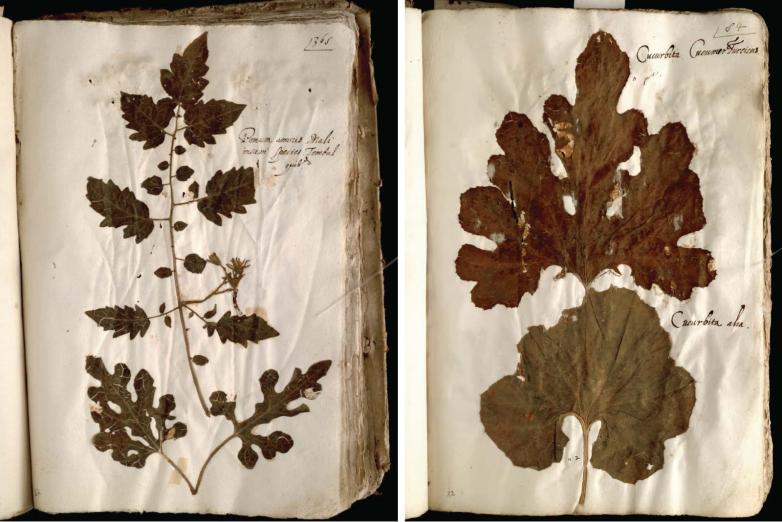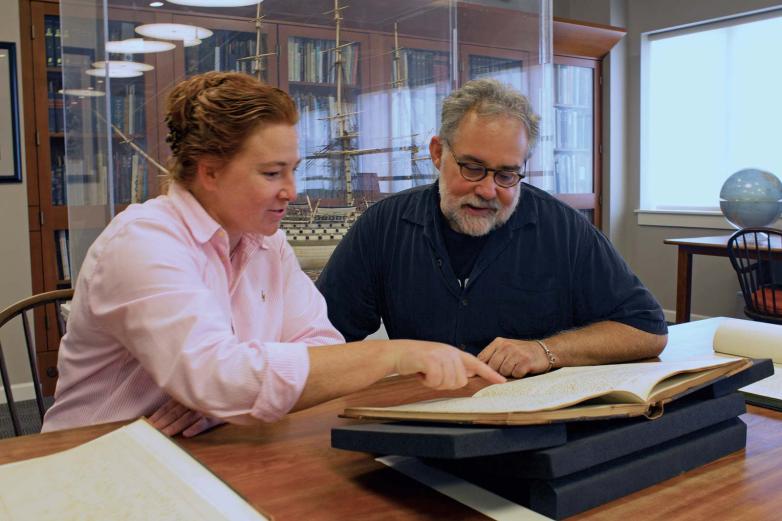Yet he added, “We can change.” Though containment is out of the question, Buldrini believes that the careful study of past trends and events allows us to understand current tendencies. With that understanding, the possibility to develop the right strategies to mitigate the negative effects of climate and environmental change can occur. Perhaps Aldrovandi’s love-in-a-mist can thrive and bloom again.
Meanwhile, as Buldrini imagines the landscapes Aldrovandi once trod, Timothy Walker, a history professor at the University of Massachusetts-Dartmouth, and Caroline Ummenhofer, an associate scientist at Woods Hole Oceanographic Institution, are out at sea centuries ago, or, at least, recording what it was like through reading historic whaling ship logbooks housed at the New Bedford Whaling Museum in Massachusetts. The museum has the world’s largest collection of whaling logbooks, with over 2,500 of them, some dating back to 1668. Most every seagoing vessel at that time kept a logbook, in essence, a journal or diary of the ship, highlighting the day-to-day life on the ocean. These include copious notes on wind speeds and precipitation.
Walker and Ummenhofer, who have been working on the project since 2019, can take that handwritten data and create climate models to see shifting weather patterns over the years. “Being able to put recent trends into a long-term context, as we are able to do with the whaling records, is really important to help with decadal predictions and assess potential risk management,” Ummenhofer said.
Since the old whaling days, there have been warming oceans, melting ice sheets on Greenland, shifting weather patterns, and more frequent intense droughts and floods. One thing that Ummenhofer and Walker discovered was that the “roaring 40s”—the strong westerly winds in the Southern Hemisphere between latitudes of 40° and 50° south—could now be called the “roaring 50s,” in that the wind has made a marked shift since the whaling days. As Ummenhofer explained, “This belt of strong westerly winds has moved further south.” This shift impacts those parts of the world that depend on wind to transport rain to the area. The land and people in that region who once had rain, have little. The people who once had little, have more.


















